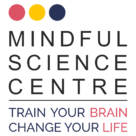Intelligence is more than we thought it was. We already know from our own experiences in the world that it takes more than just being smart or having a high IQ to be successful. As we have all seen, some of our brightest students have failed to experience the success in life that we would have predicted for them using traditional measurements. Research now tells us that, at most, IQ contributes to only about 20 percent to the factors that determine success — leaving 80 percent to other forces. These forces make up what is called emotional intelligence. Many schools are adding EQ to their definition of what it means to be smart.
What then is emotional intelligence and how can it be developed?
To answer this question we must start by looking at how important our emotions, and feelings, are in determining our behavior.
Feelings Drive Our Behaviors
Try this little exercise. On a blank sheet of paper draw a line down the center. Label the left side Feelings, and the right side Behaviors. On the left side, write a list of as many of the feelings you can remember that you’ve had today. Leave a few spaces between the words. You may think of a feeling you had in traffic getting to school, or a response to a student, etc. Take only a minute to write this list of feeling words.
Now move to the Behaviors side. Pick out one positive feeling you wrote, and opposite it in the Behaviors column, write what you remember you did in response to that feeling. You may have laughed, said thanks, etc.
Next, pick one feeling that was not pleasant and write down what you did.
Now, pick out the feeling that made you most uncomfortable and write down what you did.
Can you see how absolutely our behaviors are connected to our feelings? We all respond to our feelings, not in the exact same way, but we all do respond. Our feelings flow from our emotions. All people have the same emotions. Things like love, hate, fear, etc. The feelings people have as they experience these emotions can vary, as can their behaviors in response to these feelings. Emotions generate our feelings, and our feelings are messages that tell us that we are experiencing an emotional event. It is what we do in response to these feeling messages that is a measure of our emotional intelligence.
The Value of Delayed Gratification
When psychologist Walter Mischel started an experiment with preschoolers at Stanford University, he was interested in observing how four year olds handled their impulses. Individual children were told that they could have two marshmallows if they would wait for the experimenter to run an errand. If they couldn’t wait, they could have one marshmallow, but they could have it right then. The children were each given one marshmallow and told that if they waited until the errand was run to eat it, they could have a second one. Imagine the temptation, the struggle between immediate and delayed gratification even with the reward of an additional treat.
Some of the children (about a third) ate the marshmallow right away. Others — determined to wait — covered their eyes, put their heads down, sang to themselves, tried to sleep, and walked around the room. Science then waited for these students to grow up.
Fourteen years later when the students were in high school, a survey of parents and teachers found some remarkable differences between the two groups. Those children who held out for the second marshmallow generally grew up to be better adjusted, more popular, adventurous, confident and dependable teenagers. The children who gave in to temptation early were more likely to be lonely, easily frustrated, and stubborn. They struggled under stress and rejected challenges. On the SAT, the kids who held out scored an average of 210 points higher. At age four, this simple experiment proved to be twice as accurate a predictor of performance on SAT’s than did IQ. It was only after children learned to read that IQ became an accurate predictor of performance. This suggests that managing one’s responses to the feelings of impulse by delaying gratification casts a long shadow over an individual’s ability to perform. In quoting Walter Mischel, Daniel Goleman in his book Emotional Intelligence states, “‘Goal-directed self-imposed delay of gratification’ is perhaps the essence of emotional self-regulation: the ability to deny impulse in the service of a goal, whether it be building a business, solving an algebraic equation, or pursuing the Stanley Cup.” Mischel’s findings underscore the role of emotional intelligence as a meta-ability; determining how well or how poorly people are able to use their other mental capacities.
It seems the ability to delay gratification is a master skill. It is the success of the reasoning part of the brain over the emotional part. It is a sign of emotional intelligence. It does not show up on an IQ test.
Think for a minute about the implications of this to what your children or students need to learn — to what we need to teach. What a gift we give to children when we help them learn to channel their feelings into positive behaviors and develop self-control.
What is Emotional Intelligence?
IQ: Most of us use this term. What does it mean? In the simplest terms it is a measurement of the capacity to acquire and apply knowledge; the faculty of thought and reason. It is the ratio of a child’s tested mental age to his or her chronological age. What then is EQ?
EQ is another way of being smart. It is the capacity to know and manage one’s emotions, to marshal emotions in the service of goals. It’s empathy and being able to recognize emotions in others and to effectively handle relationships.

These two types of intelligence must work together. IQ has more to do with the rational, reasoning mind while EQ has more to do with the emotional mind. Evidence now demonstrates that the emotional mind has the power to override rational intelligence for both good and bad consequences. It is this power that amplifies the importance of developing emotional intelligence.
The emotional brain has two interdependent parts that come together in what is known as the reticular function. The first part with the amygdala playing a key role, acts like a sentry, warning of danger. The second part with the neocortex as the central player, functions like a strategist, deciding on courses of action. It is important to note that action taken can be unconscious as in reactions and impulse behavior, or it can be conscious; the product of thoughtful and considered choice. Together, the sentry and strategist govern our behavior for good or ill.
The Impact of Emotional Intelligence
Because of their connection to behavior, emotions impact every area of life: health, learning, achievement, and relationships. Managing feelings well and recognizing and responding effectively to the feelings of others enables children to lead happy and productive lives and to master habits of mind that contribute to personal and career success. We all, parents and educators, must nurture emotional intelligence in the same caring way we nurture IQ.
Most people are simply unaware of the implications and impact of emotions on health, learning, behavior and relationships. The research is rich with examples, but the end result is that people with more highly developed emotional competence have better health, do better at learning, exhibit behavior that is contributing and pro-social, and are able to establish more meaningful, longer lasting relationships. With all this standing in its favor the development of EQ is as important as the consideration of IQ particularly when its contribution to academic performance and intellectual growth are so vital.
Emotional Intelligence is Learned
The part of the brain responsible for emotional response is among the last to become anatomically mature and continues to develop past adolescence. It is evident that when emotional lessons are repeated the brain develops circuitry that wires in a specific response.
A child may learn that if you’re angry you yell or hit, or if you’re frustrated, you give up. Without intervention these will become his or her response habits throughout life. However, if a child can learn positive ways to handle anger, frustration and other emotions, these skills will serve this person well in any life endeavor, relationship or any other experience. Learning positive, pro-social responses is not generally done on one’s own. These skills are learned through interaction with other children and adults. This is why it’s critical that we help children learn all the skills of emotional intelligence. And the sooner we begin to teach appropriate responses, the sooner and easier they will become part of children’s internal response systems.
All this is not to suggest that once an individual reaches adulthood that the neural circuitry and, therefore, learned response can’t be reshaped. We now know that the brain is “plastic” and can grow and learn throughout a lifetime, but as we grow older, the ability to relearn, reshape and even acquire emotional intelligence becomes more difficult. The school years are the optimal time for acquiring the skills of Emotional Intelligence. This is another reason why it is so important that we begin a purposeful and systematic effort to provide opportunity for emotional learning in early childhood, and in elementary school and continues through middle- and high-schools.
Teaching Emotional Intelligence
The primary goal of emotional education is to improve the skills of the strategist — the neocortex. As the neocortex becomes increasingly able to manage the sentry — the fast-trigger amygdala — students learn to manage their behaviors more appropriately. Studies have proven that when students are able to rein in impulses and otherwise manage negative behavior, their academic achievement scores and school performance improve.
As educators, it is easy to think of examples of out-of-control emotions you see acted out in your schools.
Using the theory of emotional intelligence, we can make a difference in the lives of students. There are three
primary areas in which we can have tremendous impact. We know that emotional competence begins with greater self-awareness. This is followed by developing the ability to understand and manage emotions and to control impulses. Last, is the building of relationship skills. These are the areas that we can work on in school that will help students develop emotional competence that will serve them throughout their entire lives.
Educating the Emotional Mind
It is difficult to have new curriculum content added to an already full teaching or counseling schedule. However, since feelings are a part of everything we do, they can be a part of everything we teach and learn.
Incorporating emotional content into the curriculum can close the gap between academic knowledge and life experience. It can make curriculum come alive and give students a clearer picture concerning how they will apply academic knowledge.
How do we do this? We can do it by asking students to identify their own feelings and to speculate about the feelings of others — adults, classmates, story characters, contemporary and historical figures, etc. — relating feelings to actions and actions to consequences. We can challenge students to evaluate realistic alternatives and speculate as to their effects. We can talk about things we observe as we watch students in action, surfacing issues for discussion. These strategies can be used with any subject area.
Credit : innerchoice publishing

